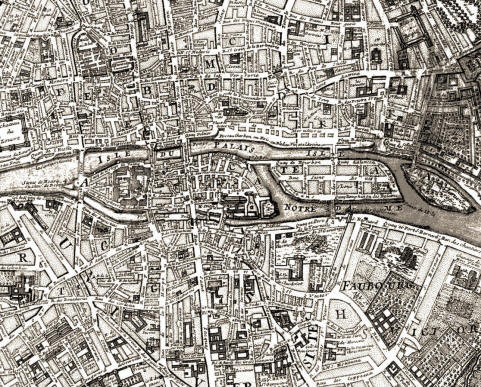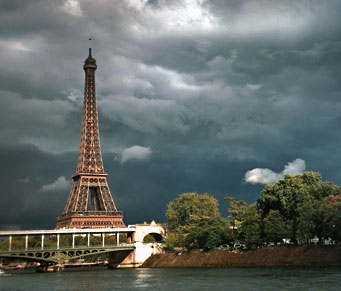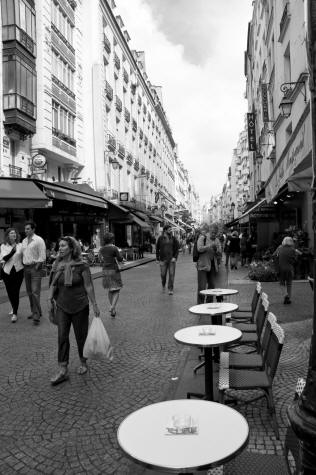Perfect 2 Days in Paris Itinerary: Île de la Cité Central Focus
Two days in Paris might seem impossibly brief, yet this timeframe forces you to experience the city's essential magic without overwhelming tourist fatigue. Using Île de la Cité as your strategic base, this itinerary maximizes your 48 hours by radiating outward from Paris's historic heart, returning each evening to the island where the city began. You'll experience both iconic monuments and intimate neighborhood life while avoiding exhausting metro rides across the city.

🗓️ Smart Planning Strategy
Book timed-entry tickets for major attractions before arrival. Download offline maps and restaurant menus. Pack comfortable walking shoes—you'll cover 8-12 miles each day, but every step reveals something extraordinary.
Day 1: Historic Heart and Artistic Treasures
Your first day focuses on the medieval core that shaped Western civilization, combined with art collections that define cultural achievement. This combination provides historical context for everything else you'll discover in Paris.
Early Morning (7:00-9:00 AM): Île de la Cité Awakening
Begin where Paris began, on Île de la Cité before tourist crowds arrive. The island belongs to locals during these precious early hours when school children cross ancient bridges, vendors arrange flower market displays, and morning light transforms limestone buildings into honey-colored perfection.
Start at Square du Vert-Galant for sunrise views across the Seine. This triangular park at the island's western tip offers panoramic perspectives of both banks while morning mist rises from river waters. Local joggers and early commuters provide authentic Parisian street life that disappears once tour groups arrive.
📍 Île de la Cité Morning Details
7:00 AM: Arrive at Square du Vert-Galant for sunrise
7:30 AM: Walk the island perimeter, observe local life
8:00 AM: Breakfast at Café Panis (6 Rue du Cloître Notre-Dame)
8:30 AM: Explore Flower Market while vendors set up displays
9:00 AM: Enter Notre-Dame Cathedral (opens 8:00 AM weekdays)
Morning (9:00-11:30 AM): Notre-Dame and Gothic Splendor
Notre-Dame Cathedral, fully restored following the 2019 fire, represents 800 years of French spiritual and artistic achievement. The cathedral's reopening in December 2024 revealed spaces more magnificent than ever, with restored stained glass windows that cast prismatic light across ancient stones.
Climb the 387 steps to the tower gallery for unparalleled views across medieval Paris. The famous gargoyles, designed as both decorative elements and functional water spouts, frame perspectives that helped Victor Hugo envision "The Hunchback of Notre-Dame." From this height, Paris unfolds like a medieval manuscript illuminated by morning light.
⛪ Notre-Dame Cathedral Essentials
Address: 6 Parvis Notre-Dame, 75004 Paris
Tower Hours: Daily 10:00-18:00 (April-Sept), 10:00-17:00 (Oct-March)
Cathedral Admission: Free (towers €10)
Advance Booking: Required for tower visits
Phone: +33 1 42 34 56 10
Website: notredamedeparis.fr
Photography: Allowed inside cathedral and towers
Late Morning (11:30 AM-1:00 PM): Sainte-Chapelle's Radiant Beauty
A five-minute walk from Notre-Dame brings you to Sainte-Chapelle, the 13th-century Gothic chapel that houses the most extraordinary stained glass windows in existence. King Louis IX (Saint Louis) built this architectural jewel specifically to house Christ's crown of thorns and other Passion relics.
Enter the lower chapel first, then ascend to the upper sanctuary where fifteen towering windows reach 15 meters high. When sunlight streams through these biblical narratives told in glass, the entire space transforms into a kaleidoscope of sapphire, ruby, and emerald light. The acoustic properties are so perfect that medieval kings held private prayer services here knowing their voices would carry with supernatural clarity.

Lunch (1:00-2:30 PM): Medieval Ambiance Dining
Rue Chanoinesse, hidden behind Notre-Dame, contains some of Paris's most ancient streets where medieval clergy once lived in small houses that survive today as intimate restaurants and cafés.
Au Vieux Paris d'Arcole offers the perfect midday break in surroundings that transport you directly to medieval times. Ivy-covered walls, flower boxes, and antique furnishings create fairy-tale atmosphere while traditional French cuisine provides energy for afternoon explorations.
🍽️ Lunch Recommendation: Au Vieux Paris d'Arcole
Address: 24 Rue Chanoinesse, 75004 Paris
Phone: +33 1 40 51 78 52
Price Range: €25-35 lunch menu
Signature: French onion soup and duck confit
Atmosphere: Medieval street setting with ivy-covered walls
Reservations: Recommended during peak season
Afternoon (2:30-6:00 PM): The Louvre's Greatest Hits
Cross Pont Neuf to reach the Louvre, using your afternoon for a focused tour of art history's greatest masterpieces. With limited time, concentrate on the museum's most celebrated works rather than attempting comprehensive exploration.
The Mona Lisa's enigmatic smile, Venus de Milo's timeless beauty, and Winged Victory's dramatic pose represent 3,000 years of artistic achievement. Use the museum's app for navigation and background information that enhances rather than replaces direct experience with these iconic works.
Early Evening (6:00-8:00 PM): Trocadéro Sunset Spectacular
Take Metro Line 1 directly from Louvre-Rivoli to Trocadéro for the classic Eiffel Tower sunset experience. The marble platform provides unobstructed views while surrounding gardens offer multiple perspective points for photography and quiet contemplation.
Arrive 45 minutes before sunset for optimal positioning. Street performers, vendors, and other tourists create a festive atmosphere that peaks when evening light transforms the iron tower into a golden sculpture against darkening skies.

📸 Eiffel Tower Photography Tips
- Arrive early for front-row spots on the marble platform
- Bring layers—evening temperatures drop near the Seine
- Battery pack essential for extended photography sessions
- Golden hour: 45 minutes before sunset for warm light
- Blue hour: 20 minutes after sunset for dramatic silhouettes
- Hourly light show: Tower sparkles for 5 minutes every hour after dark
Evening (8:00-10:00 PM): Return to Île de la Cité
End your first day where it began, returning to Île de la Cité for dinner in surroundings now familiar but transformed by evening light. The island's restaurants offer intimate settings for reflecting on the day's discoveries while planning tomorrow's adventures.
Walk the island's perimeter after dinner to experience how evening illumination transforms medieval architecture. Notre-Dame's floodlit facade, the Conciergerie's imposing towers, and Sainte-Chapelle's glowing windows create a magical nighttime tableau that few tourists take time to appreciate.
Day 2: Art, Culture, and Neighborhood Life
Your second day explores Paris's artistic legacy while experiencing authentic neighborhood life in areas where locals work, shop, and socialize away from major tourist attractions.
Early Morning (8:00-10:00 AM): Marché aux Fleurs and Local Rhythms
Begin Day 2 at the Flower Market, where vendors create fresh displays of seasonal blooms while birds sing in adjacent cages during Sunday's specialized bird market. This daily ritual, unchanged for generations, offers insight into authentic Parisian life that exists parallel to tourist attractions.
Purchase small bouquets or potted herbs as gifts while observing the complex social interactions between vendors and regular customers. These relationships, built over decades, reveal how neighborhood commerce creates community bonds in large cities.

Morning (10:00 AM-12:30 PM): Musée d'Orsay Impressionist Paradise
Cross to the Left Bank via Pont Saint-Michel for the world's greatest collection of Impressionist and Post-Impressionist masterpieces. The Musée d'Orsay, housed in a magnificent Belle Époque railway station, displays works by Monet, Renoir, Van Gogh, and Degas in galleries flooded with natural light.
Focus on the fifth floor for the museum's most celebrated Impressionist works, then explore the ground floor's sculpture collections that reveal how 19th-century artists revolutionized three-dimensional art alongside their two-dimensional innovations.
🎨 Musée d'Orsay Highlights Guide
Address: 1 Rue de la Légion d'Honneur, 75007 Paris
Hours: Tuesday-Sunday 9:30-18:00 (Thursday until 21:45)
Admission: €16 adults, €13 reduced
Must-See Works: Monet's Water Lilies, Van Gogh's Starry Night over Rhône
Best Light: Morning visits offer superior lighting for Impressionist works
Website: musee-orsay.fr
Midday (12:30-2:00 PM): Latin Quarter Exploration
Wander the Latin Quarter's medieval streets where universities have educated students for 800 years. The Sorbonne, Panthéon, and countless bookshops create an atmosphere of intellectual curiosity that has inspired generations of writers, philosophers, and revolutionaries.
Lunch at a traditional bistro where university professors, local residents, and international students share tables while discussing everything from medieval literature to contemporary politics. These conversations, conducted in rapid French mixed with multiple languages, embody Paris's role as a global intellectual center.
Afternoon (2:00-5:00 PM): Le Marais District Discovery
Cross to the Right Bank via Pont de l'Archevêché to explore Le Marais, Paris's best-preserved medieval neighborhood. Jewish culture, aristocratic mansions, contemporary art galleries, and trendy boutiques create layers of history that reveal themselves to patient observers.
Place des Vosges, Paris's oldest planned square, demonstrates Renaissance urban planning while providing green space for afternoon relaxation. The covered arcades shelter luxury shops and intimate cafés where locals meet for afternoon coffee and conversation.
Late Afternoon (5:00-7:00 PM): Montmartre and Sacré-Cœur
Take Metro Line 1 to Châtelet, then transfer to Line 12 for Pigalle station to reach Montmartre, the hilltop village that retained its bohemian character despite tourist popularity. The funicular railway provides easy access to Sacré-Cœur Basilica's dramatic viewpoint over all of Paris.
Artists still work in Place du Tertre where Picasso, Renoir, and Toulouse-Lautrec once created masterpieces. While many contemporary artists cater to tourists, observant visitors can identify talented painters creating original works that continue Montmartre's authentic artistic traditions.
⚠️ Montmartre Navigation Tips
- Avoid aggressive street artists and tourist scams near Sacré-Cœur
- Use the funicular or stairs—taxi access is limited
- Sunset viewing requires arriving 1 hour early for optimal spots
- Comfortable shoes essential for cobblestone streets
- Pickpocket awareness necessary in crowded tourist areas
Evening (7:00-9:00 PM): Seine River Cruise
Return to Île de la Cité for an evening Seine cruise that provides moving perspectives on monuments you've visited while revealing architectural details invisible from street level. Commentary, available in multiple languages, connects individual attractions within Paris's broader historical narrative.
Evening light transforms familiar buildings into golden sculptures while boat movement creates constantly changing compositions perfect for photography and quiet reflection on your 48-hour Paris immersion.
Practical Logistics for Maximum Efficiency
Successful 2-day Paris visits require careful attention to timing, transportation, and energy management that maximizes experiences while minimizing exhaustion.
Transportation Strategy
Purchase a 2-day Navigo pass (€30) that includes all metro, bus, and RER transportation within central Paris zones. Download the Citymapper app for real-time transit information and walking directions that account for construction delays and service interruptions.
Walking remains the best option for short distances, especially around Île de la Cité where metro stations require extra time for platform access. Reserve public transportation for longer journeys like Trocadéro to Montmartre or Louvre to Latin Quarter.
Accommodation Recommendations
Stay on or near Île de la Cité to minimize travel time while maximizing evening flexibility for spontaneous discoveries. These central locations cost more but save precious hours that budget accommodations consume through daily commuting.
🏨 Strategic Location Hotels
- Luxury: Hôtel des Grands Boulevards (boutique elegance)
- Mid-Range: Hôtel Saint-Louis en l'Isle (authentic island location)
- Budget: Hotel des Deux-Îles (basic but perfectly located)
- Alternative: Vacation rentals on Île Saint-Louis for space and kitchen access
Dining Strategy for Time Efficiency
Make dinner reservations before arrival, especially for restaurants on Île de la Cité where limited seating fills quickly. Lunch can be more flexible with café stops, market purchases, or museum restaurants that don't require advance planning.
Pack small snacks and water bottles to maintain energy between scheduled meals. Paris fountains provide free drinking water while bakeries offer quick, high-quality food that rivals restaurant meals at fraction of the time investment.
Weather and Seasonal Considerations
Two-day Paris visits require flexibility for weather changes that can dramatically impact outdoor activities and photography opportunities.
Spring (March-May): Perfect Balance
Mild temperatures and longer daylight create ideal conditions for extensive walking while blooming trees add natural beauty to architectural photographs. Pack layers for temperature variations between morning and evening.
Summer (June-August): Extended Possibilities
Long daylight hours (sunset after 9 PM) extend sightseeing possibilities but require heat management strategies. Start early, take midday breaks, and reserve strenuous activities for morning and evening hours.
Autumn (September-November): Photogenic Excellence
Golden light and clear skies create the year's best photography conditions while cooler temperatures make walking comfortable. Shorter days require careful time management but offer dramatic lighting effects.
Winter (December-February): Intimate Atmosphere
Fewer tourists and cozy indoor spaces create intimate experiences while holiday decorations add seasonal magic. Shorter daylight hours concentrate activities but create opportunities for extended museum visits and café conversations.
🌤️ Weather-Adaptive Planning
- Rain Plan: Extended museum time, covered passages, café culture
- Heat Plan: Early starts, shaded parks, air-conditioned spaces
- Cold Plan: Warm clothing layers, heated attractions, hot beverage breaks
- Wind Plan: Avoid Trocadéro platform, choose sheltered river viewing spots
Budget Management for 48 Hours
Strategic spending maximizes experiences while controlling costs that can quickly escalate in expensive cities like Paris.
High-Value Investments
Splurge on experiences that save time and provide access unavailable to budget travelers: skip-the-line tickets, guided tours, and centrally located accommodations that eliminate commuting time and energy.
Smart Savings
Free activities—walking tours, park visits, window shopping, people watching—often provide more authentic cultural experiences than expensive attractions. Many churches, including Notre-Dame, offer free admission while providing spiritual and architectural insights.
💰 Estimated 2-Day Paris Costs (Per Person)
- Budget Level: €150-200 (hostels, street food, free attractions)
- Mid-Range: €300-450 (hotels, restaurant meals, major attractions)
- Luxury: €600-1000 (premium hotels, fine dining, private tours)
- Major Expenses: Accommodation (40%), dining (30%), attractions (20%), transport (10%)
Making Memories Last
Two days in Paris pass quickly, but thoughtful documentation and souvenir selection create lasting connections to your brief but intense urban romance.
Photography Focus
Concentrate on unique perspectives rather than standard tourist shots. Architectural details, street life moments, and personal interactions often provide more meaningful memories than iconic landmark reproductions available anywhere online.
Souvenir Strategy
Choose items that connect to specific experiences: books from Shakespeare and Company, scarves from department store visits, local wines from restaurant discoveries. These tangible reminders trigger detailed memory recall that general Paris merchandise cannot provide.
Paris in 48 hours offers an intensive introduction to one of civilization's greatest cities. Using Île de la Cité as your central base creates logical itineraries while providing peaceful returns to the island where Paris began its remarkable journey through history. Every moment will feel precious because it is—two days force you to notice details and appreciate experiences that longer visits might take for granted.
Remember that this itinerary provides structure, not scripture. The best Paris discoveries often happen when you abandon plans in favor of spontaneous exploration. Trust your instincts, follow interesting streets, and let the city surprise you. Paris rewards curiosity with unexpected delights that no guidebook can predict or plan.

